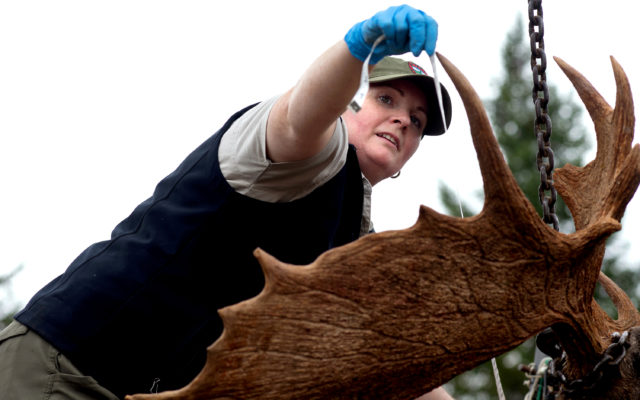
2021 was one of the worst years for Maine moose hunters
By Pete Warner, Bangor Daily News Staff
Despite the availability of more permits, overall hunter success was down slightly during the traditional portion of the 2021 Maine moose hunt.
The Department of Inland Fisheries and Wildlife reports that 68 percent of hunters — 2,353 of 3,520 — harvested a moose as part of the statewide hunt last year.
That’s the third-lowest success rate in the 41-year history of the hunt and marks the fourth time in the last 11 years that fewer than 70 percent of permit holders shot a moose. For perspective, hunters would need to have killed 101 more moose to achieve 70 percent.
The other years under 70 percent were 2011 (.669), the all-time low of .653 in 2014, and .691 in 2019. The average harvest since 2010 is 72 percent.
In 2020, more than 76 percent of hunters (2,382 of 3,135) successfully harvested a moose. That was the highest percentage of animals taken since 2012.
Conditions were highly favorable during the first bulls-only week in September, which coincides with the mating season, as 77 percent of hunters killed a moose.
However, the weather during the week of Oct. 11-16 proved challenging for hunters trying to coax a moose out into the open. The success rate dipped to 57 percent.
“That October bull season, the success rate was quite a bit lower than we typically see, due mostly to the really warm weather,” Nate Webb, DIF&W’s wildlife division director, said in November. “The warm temperatures at night, in particular, reduced movement of bulls a lot.”
In contrast, the portions of the season that targeted only cows achieved a 79 percent harvest, up one percent from 2020.
DIF&W last fall also conducted its initial adaptive unit hunt in the western half of Wildlife Management District 4. That effort, which targeted only cows and calves, is attempting to lower the population density of moose in the region to determine whether it reduces the number of winter ticks.
During that hunt, which encompassed three consecutive weeks, 50 percent of 510 participating hunters harvested a moose. Because of the unique nature of that hunt, those numbers are not included in the tallies from the traditional portion of the season.
“I was thinking going into it that if we got 50 percent, we’d be doing pretty well, as far as where we want to be,” said DIF&W moose biologist Lee Kantar.
He said that even though the kill for the regular hunt was 68 percent, the harvest remains a remarkable accomplishment. With unpredictable and sometimes unseasonably warm weather, varying degrees of hunting pressure, and myriad levels of hunter experience and tactics, it can be difficult to keep things in perspective.
“You look at the success rates that we have [for moose] compared [with] any jurisdiction, compared to any species. It’s unheard of,” Kantar said.
For the adaptive hunt, biologists will now evaluate what happened last year and determine what changes might be needed to improve their success rate moving forward.
“How we accomplish that was going to be a moving target and an evolving situation,” Kantar said. “As much as we did a full-court press on prepping hunters, the bottom line is it’s a different hunt as you go further past the rut and when you’re focusing on a cow or a calf.”
Kantar said the remote nature of the huge area that makes up WMD 4A is a major challenge in and of itself.
Data of interest from the moose harvested during the adaptive hunt include the age distribution, calves compared with adults, and calf weights.
The next phase of the project included a recent aerial study of the area to estimate moose numbers and the capture of calves to be fitted with GPS collars to track mortality.
The application process for the 2022 moose hunt is expected to begin in February and run into May.